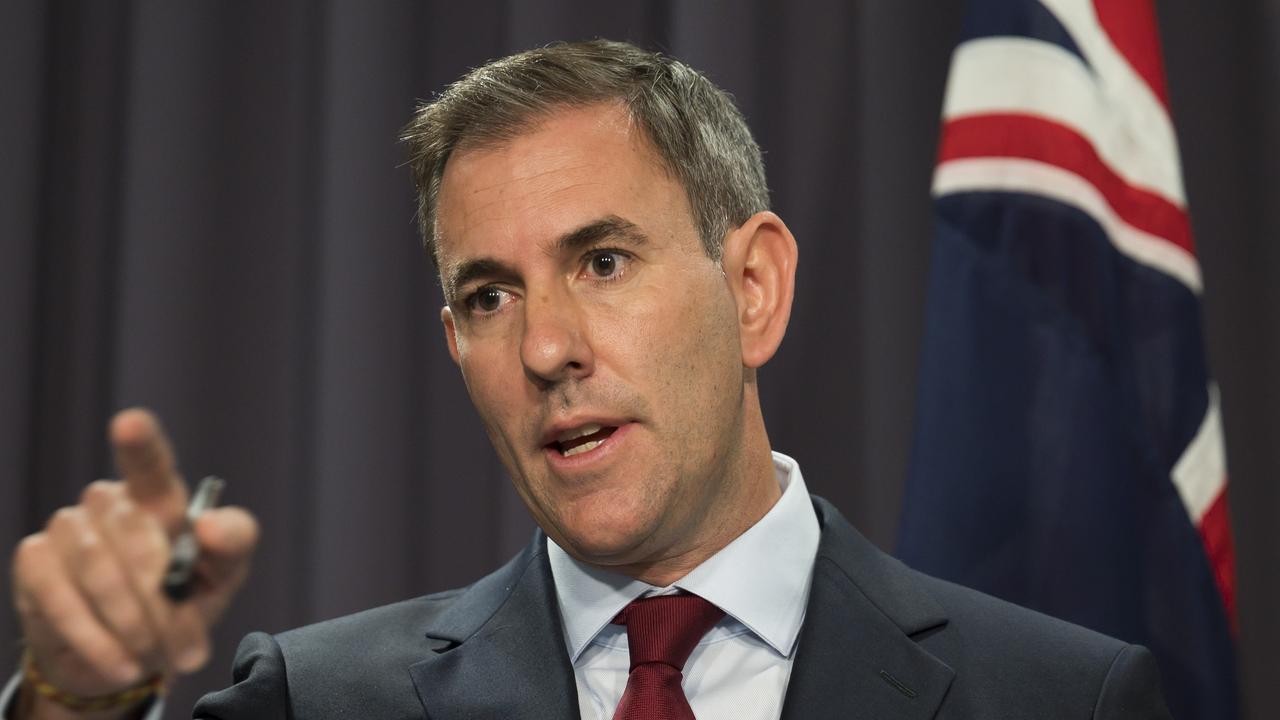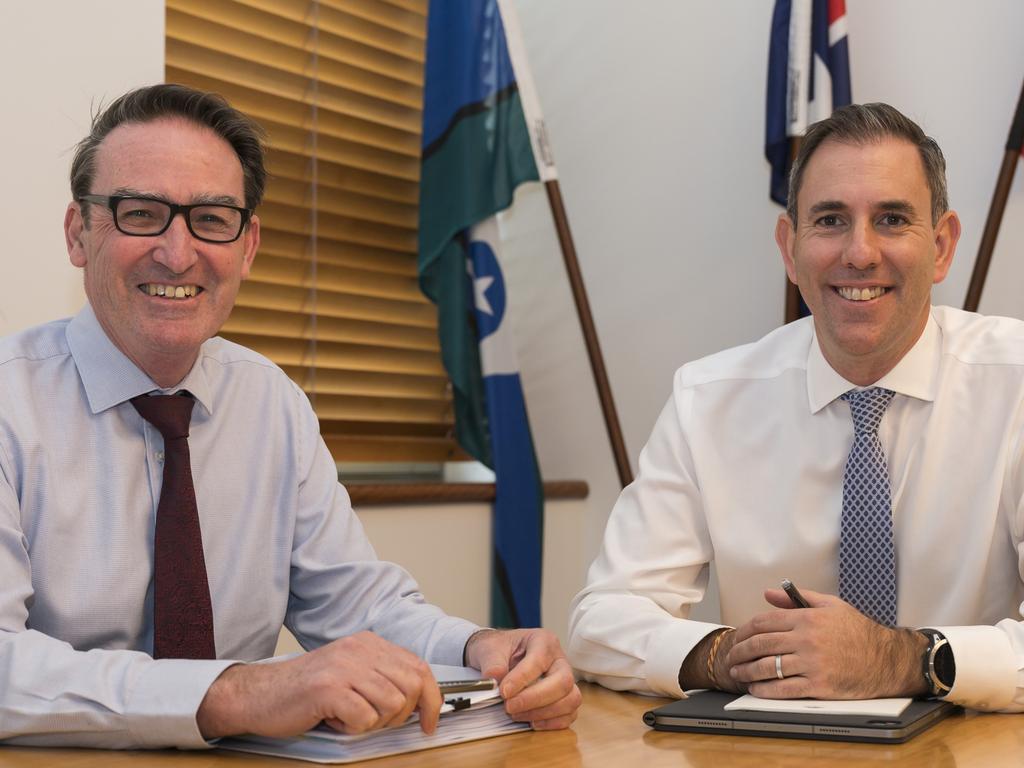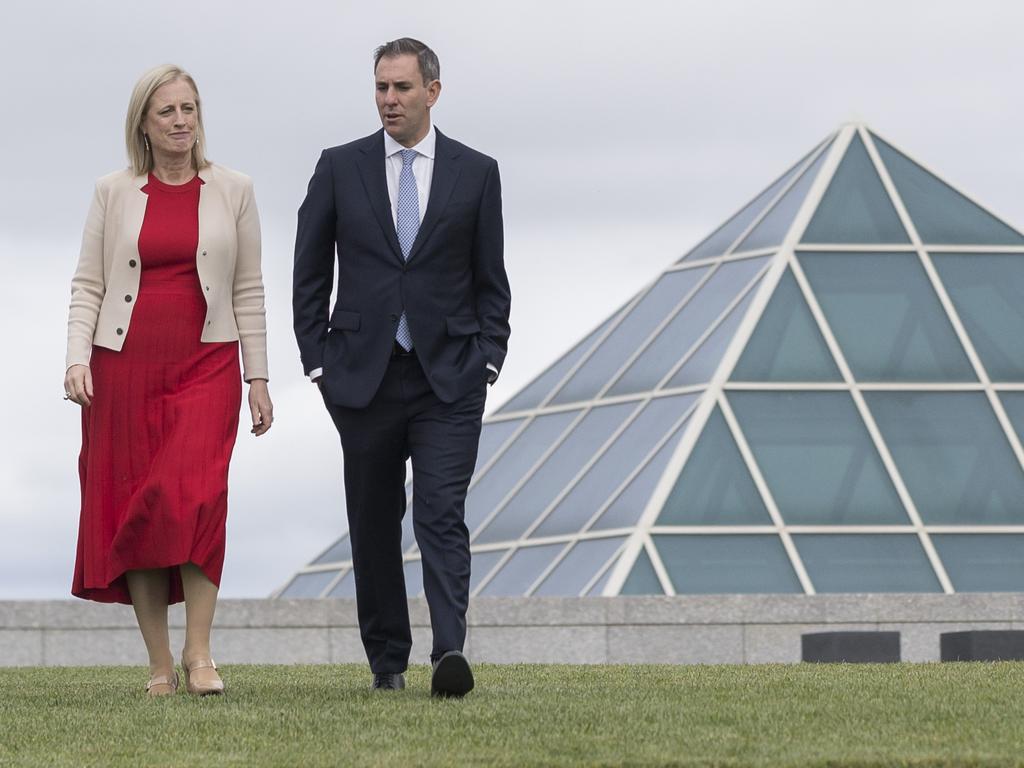Treasurer Jim Chalmers seeks to balance objectives for new growth model and new orthodoxy


It is a tall order, which I put to Chalmers is like spinning plates on sticks, and with anaemic economic growth and a GDP per capita recession, the Reserve Bank warning inflation is still too high and not ruling out raising interest rates, and the International Monetary Fund and OECD cautioning about spending and to not ignore the productivity challenge to boost living standards.
“Balance is probably the most important word when we think about this budget because there are a number of cross-currents in the global economy and in the domestic economy,” Chalmers tells Inquirer in an exclusive interview.
“So, yes, the budget needs to do more than one thing. We acknowledge that and I’m pretty confident that we’ve struck the right balance between those three key objectives.”
Putting the finishing touches on #Budget2024 - it will be all about easing cost of living pressures and investing in a future made in Australia. #auspol#ausecon â¦@AustralianLaborâ© pic.twitter.com/eNXr5GW4lC
— Jim Chalmers MP (@JEChalmers) May 9, 2024
But with inflation running at 3.6 per cent on an annual basis, the Reserve Bank and the government need to work hand-in-hand to further dampen demand by pulling the reins on spending. It does not have to be an austerity budget that slashes and burns, as Chalmers said was the alternative this week, but uses revenue upgrades to pay down debt and maintain the surplus.
“I am approaching the budget in those terms,” Chalmers insists.
“The two main ways we are helping the Reserve Bank is, first, the way that we design our cost-of-living help so that it puts downward pressure on inflation rather than makes the problem worse. And, second, the way that we are banking, this year, almost all of our upward revision in revenue. So, we see the primary objective of the budget in the near term is to do our bit in the fight against inflation.”
Treasurers Paul Keating and Peter Costello made a political virtue out of fiscal responsibility. A budget surplus was the Holy Grail. In the 1980s, Keating delivered four budget surpluses, the first since Arthur Fadden’s 1952-53 budget. In the ’90s and 2000s, Costello delivered 10 budget surpluses. New accounting measures excluding net advances now add other treasurers to this league table but only Keating’s and Costello’s budget papers at the time showed a surplus.
Chalmers delivered the first budget surplus in 15 years, in 2022-23, and we will likely see another in 2023-24. It is an extraordinary achievement that eluded his recent predecessors.

Commodity prices may continue to surprise on the upside and deliver another surplus in 2024-25 even if it is not estimated. Indeed, it is expected there will be an additional $25bn in revenue across the next four years.
“There will be a much smaller upgrade to revenue in this budget than in the last couple of budgets,” Chalmers says. “Some of the deficits will be a little bigger and some will be a little better.” Pushed on spending, he responds: “The overall amount of spending does matter, but what matters just as much is the timing of that spending, the quality of that spending, how it’s sequenced and whether we get a productive benefit from it.”
Still, the inflationary crisis could have been used to insist on a further fiscal tightening, with ministers told to trim their sails for continued heavy weather. But a return to deficits is expected across the forward estimates. Moreover, stage three income tax cuts would not present an inflationary risk if coupled with fiscal consolidation and debt reduction in addition to tight monetary policy settings.
“This government is at its best when it governs from the centre, when it takes the responsible middle course and where it doesn’t overreact in either direction,” Chalmers says. “And that’s why there will be restraint in the budget. It will be a responsible budget. We are paying down Liberal debt, we are getting the budget in much better nick in the near term because that is one of the ways that we can contribute to getting inflation down to much more manageable levels.”
The centrepiece of the government’s cost-of-living strategy will be the revamped $359bn 10-year income tax cut package. Most of the additional relief now goes to those on low and middle incomes. The result, Chalmers emphasised when I interviewed him in February, is that all 13.6 million taxpayers will receive a tax cut and 84 per cent will be better off compared with the original design legislated by the previous government.
“What we did quite deliberately when we changed the old stage three tax cuts was to deliver a much better outcome for middle Australia to recognise the cost-of-living pressures that people are under and to get a better deal for younger people on lower and middle incomes,” he says.
It took political courage. Not all ministers were initially supportive. Chalmers was always eager to redesign the tax cuts, which had been legislated with Labor’s support. I suggest that some ministers were concerned about the political implications.
“We made an economic argument rather than a political one,” Chalmers says. “The reasons why our first two budgets landed well is because we prioritised the economic cycle over the political cycle. And we’ll do that again in this third budget on Tuesday.
“We did take a political risk in order to get a better economic outcome for more people. I’m pleased we did and I’m proud we did. And I think the fact that our opponents capitulated in the fashion that they did is evidence that we got the economics right.”

Chalmers is “very confident” that the tax cuts, like other cost-of-living relief, including initiatives not yet announced, in combination will put downward pressure on inflation and not make the Reserve Bank’s job harder.
The Treasurer acknowledges the supply side also matters in curbing inflation and there will be action on that front, too. The government will announce new initiatives that encourage investment in the productive drivers of the economy, such as infrastructure, education and training, and cutting business red tape.
“All of these things which make a supply-side contribution are key,” he says. “The North Star for every treasurer is to try to grow the economy in the medium term with low inflation and decent wages, and you’ll see in the budget how we’ve effectively balanced the near-term pressures with the longer-term opportunities.

“There are effectively two parts to this job: there’s managing and there’s maximising. There’s managing the pressures that we confront. They come at us from around the world and from around the country, and we need to manage those pressures, geopolitical, economic and otherwise. And we need to maximise the opportunities that are before us.”
Chalmers, confident and assured, is ambitious about long-term economic policy. He believes Australia can develop “a new growth model” with public and private investment harnessing the benefits of the decarbonisation of the global economy. If we do not embrace the net-zero energy transition, he argues, Australians will have to accept slower growth, reduced living standards and lower wages. He frames this as a generational responsibility.
He argues “the world has changed” and economic “orthodoxy is changing with it”, which requires a future growth model that combines new energy technology, industrial manufacturing and human capital to boost capital flows. It is not about consigning the Hawke-Keating government legacy of smaller government and less economic intervention entirely to history but recognising we are in a new era that requires a new approach.

“I spend so much time talking about a Future Made in Australia in the context of private investment, not just public investment,” he says. “We’re trying to attract more private investment rather than replace it. And we’re playing a role there, but most of the heavy lifting when it comes to the hundreds of billions of dollars that we’ll need in capital as a country to make the most of this big chance is going to come from the private sector.”
He says under the Future Made in Australia policy, the aim is to harness investment in initiatives such as quantum computing, critical minerals, hydrogen and solar panels to turbocharge growth. It is about “investing and engaging” and not “protecting and retreating”. Other economic levers include business tax incentives, red tape reduction, accelerated depreciation and foreign investment rule changes to attract capital.
The Treasurer says the advantages for Australia are geographical, geopolitical, geological and meteorological, and he emphasises the government’s primary role is to encourage rather than replace private investment in the economy with permanent interventions.
“We’re building a new growth model for a new generation of prosperity and that’s not, as I said before, a repudiation of the past; it’s building on the past,” he reiterates. “We have to recognise that the supply chains of the world are changing, the economic opportunities are changing and we need to become an indispensable part of that.
“So many of our friends around the world during and in the aftermath of Covid recognised that their supply chains weren’t resilient or robust or reliable enough. And we have this huge opportunity to be a reliable part of these global supply chains, particularly in the context of net zero.
“And it’s not good enough for Australia just to live at the very end of these global supply chains, we want to be where the value is created as well. Our friends are looking for reliable suppliers of raw materials, but also of value-added materials. And I think that’s where our opportunity lies.”

Only four Labor treasurers have delivered more budgets than Chalmers – Keating, Ben Chifley, Wayne Swan and Andrew Fisher. Mindful of this, Chalmers says he knows how fleeting the chance can be to make a mark on the policy settings of the nation and he is determined to make the most of it.
A Covid outbreak in Treasury and his office has meant a different budget preparation this year. Rather than spend part of every day at Treasury, he has worked from his Parliament House office or at home outside Brisbane.
All treasurers have pre-budget rituals. Keating would drop the needle on a Mahler symphony at his Canberra home. Costello, No.1 ticket holder for Essendon, would relax at a game. Chalmers will take a morning run in his outer Brisbane electorate, make pancakes with his three children and then take them to basketball.
“My obsession is making Australians the beneficiaries of change,” he says. “This is not just about the market and the state; it’s about the push and pull of the past and the future … when the printers start whirring on the weekend, I will be very confident that we’ve grappled with the right issues, we’ve struck the right balances and we’ve done our best.”







Jim Chalmers has three objectives for Tuesday’s budget, his third as Treasurer: easing cost-of-living pressures to help tackle sticky inflation; kickstarting a new model for growth that combines public and private investment, and challenges economic orthodoxy; and ensuring it is a fiscally prudent and responsible financial statement.